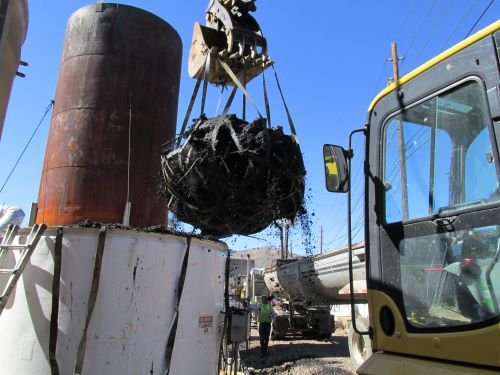MV Technologies collaborates with customers to design the most cost-effective H2S removal systems engineered around unique system parameters. Although our patented BAM™ iron sponge media is often the most cost-effective solution, there are system designs for which granular media or activated carbon media make more sense. MV Technologies provides ALL solutions and will help evaluate the best technology (or combination of technologies) for each customer’s specific project requirements.
MV’s systems are engineered to optimize results and maximize media life. However, media changeouts are an inevitable part of the H2S removal process. Overspent media reduces the efficiency of the H2S removal process, compromises the performance of capital equipment, increases operating costs and complicates the media removal process. This is why it is important to adhere to the system requirements and media changeout schedule provided by MV to its customers.
Regardless of the media used for each system, we are often asked if the spent media can be recycled and what can be done with the spent media at the time of a media changeout.
Can Spent H2S Removal Media Be Recycled?
Unfortunately, spent media is not currently recycled. As sustainability and recycling are increasingly at the forefront of organizational social responsibility agendas, the recycling of media has been explored. However, due to transportation costs, it is very cost prohibitive. Although not recyclable, it is non-hazardous and can be disposed of without harming the environment – and perhaps with some unexpected benefits.
Disposal of Spent H2S Removal Media
Well, then how is spent media disposed of? Spent media is non-hazardous and passes both USEPA’s Toxic Characteristic Leaching Procedure (TCLP) and California’s Waste Extraction Test (WET). Therefore, it can be disposed of in a non-hazardous solid waste facility. If the spent media was utilized to clean landfill gas (LFG), MV recommends that it stay at the landfill. Spent H2S removal media can be applied either at the working face or land applied on final or intermediate cover.
Spent media is composed of either wood chips, clay or a zeolite and elemental sulfur and iron pyrite. Both sulfur and iron pyrite are considered plant nutrients. In addition, spent media in the form of wood chips act like a mulch in stabilization of freshly planted landfill cover.
To transport spent media, it can be placed in site haul trucks, dump trucks or roll-off style boxes at landfills. At anaerobic digesters, it may be placed in dump trucks or roll-off style boxes and either hauled to a landfill or compost site or land applied as a soil amendment.
Residual Benefits of Spent Media
There are no residual benefits associated with spent media being placed back into a landfill. However, as previously mentioned, it can be beneficial in stabilizing final or intermediate cover on a landfill.
The iron oxide on the media is never fully spent. Unreacted iron oxide is present on the spent media. Therefore, spent media is sometimes placed in areas that have known surface LFG fugitive emissions, presenting the potential for the unspent iron oxide to react with any H2S within the LFG. While effective, this reaction is temporary and very localized.
Some might say spent media from anaerobic digesters that is composted or land applied as a soil amendment is, in fact, being recycled and thereby produces residual benefits. However, very little research has been done to substantiate and measure such benefits.

